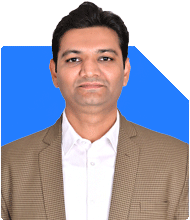Hello Sir,
I am working in sales and marketing Overseas West African market within the pharmaceuticals industry.
I have my own home of 1500 sq feet gross value in Nagpur 75 lac .
I have did mutual fund investment of 4 lac in December 2023 ( one time investment ) , regular SIP 30,000 per month from last 1 years and more planning to invest 30,0000 per month from July 2024 .I had taken TATA AIA Ulip plan 1.5 Lac per annum for 5 years (dec 2022 . finished 2 years ) . Present FD @ 7% 10 lac with HDFC Bank. Around purchase 14 lac in Gold bars . Planning to take the Term plan for age 85 years premium annual 1.75Lac pee annum for next 10 years for risk cover 2 lac . Monthly LIC policy going on 80,000 per annum .
Ans: I appreciate your trust in seeking financial advice. Let’s dive into your financial situation and plan a robust strategy for your future.
Your Current Financial Landscape
You have a well-diversified portfolio with investments in mutual funds, fixed deposits, gold, and insurance. Here’s an overview:
Home: You own a home in Nagpur worth Rs. 75 lakhs.
Mutual Funds: You have invested Rs. 4 lakhs in mutual funds as a lump sum in December 2023. Additionally, you have been doing SIPs of Rs. 30,000 per month for the last year.
Fixed Deposits: You have Rs. 10 lakhs in fixed deposits with HDFC Bank at a 7% interest rate.
Gold: You have invested Rs. 14 lakhs in gold bars.
Insurance: You have a TATA AIA ULIP plan with an annual premium of Rs. 1.5 lakhs, currently in its second year of a five-year term. Additionally, you have a monthly LIC policy with an annual premium of Rs. 80,000.
Future Plans: You plan to increase your SIP to Rs. 30,000 per month from July 2024. You are also considering a term plan with an annual premium of Rs. 1.75 lakhs for the next 10 years, offering a cover of Rs. 2 crores until the age of 85.
Evaluating Your Investments
Mutual Funds
Mutual funds are a fantastic way to grow your wealth over the long term. They offer the benefits of professional management, diversification, and the power of compounding.
Advantages of Mutual Funds:
Diversification: Mutual funds invest in a variety of securities, reducing risk.
Professional Management: Experienced fund managers make investment decisions on your behalf.
Liquidity: You can easily redeem your investments when needed.
Flexibility: With options like SIPs, you can start with a small amount and increase it over time.
Power of Compounding
Compounding is the process where the returns on your investments generate their returns. The longer you stay invested, the more your money grows. This is why starting early and staying consistent with your SIPs is crucial.
Actively Managed Funds vs. Index Funds
Actively Managed Funds:
Fund managers actively select stocks to beat the market.
Potential for higher returns than index funds.
Regular reviews and adjustments based on market conditions.
Index Funds:
Passively track a specific index like Nifty or Sensex.
Lower expense ratios, but often lower returns compared to actively managed funds.
Lack of flexibility to adjust to market changes.
In your case, actively managed funds might offer better growth potential.
Regular Funds vs. Direct Funds
Regular Funds:
Invest through a Certified Financial Planner (CFP).
CFP provides personalized advice and ongoing support.
Slightly higher expense ratio due to advisory fees.
Direct Funds:
Invest directly with the fund house, bypassing a CFP.
Lower expense ratio but lack of professional guidance.
Suitable for experienced investors with time to manage their portfolios.
Given your busy career, regular funds through a CFP could provide valuable support and expertise.
Fixed Deposits
Fixed deposits are safe and offer guaranteed returns. However, their growth potential is limited compared to mutual funds. Given the current inflation rates, FD returns might not keep pace with the rising cost of living.
Gold Investment
Gold is a good hedge against inflation and market volatility. However, it doesn’t generate regular income. It’s essential to balance your portfolio with growth-oriented investments like mutual funds.
Insurance Plans
ULIP Plan
ULIPs combine investment and insurance. They have higher costs due to insurance charges and fund management fees. You have already completed two years out of five. It might be beneficial to surrender the plan after the lock-in period and reinvest in mutual funds for better returns.
Term Plan
A term plan is essential for risk cover. Ensure the cover amount aligns with your family’s financial needs. A Rs. 2 crore cover until age 85 is a prudent decision, providing long-term security.
LIC Policy
LIC policies offer traditional savings with insurance. However, the returns are generally lower than mutual funds. It might be worth reviewing this policy and considering surrendering it to reinvest in more lucrative options.
Strategic Recommendations
Enhance Your SIPs
You are planning to increase your SIP to Rs. 30,000 per month. This is a smart move. SIPs instill financial discipline and benefit from rupee cost averaging. Here’s how to optimize your SIPs:
Diversify: Invest in a mix of large-cap, mid-cap, small-cap, and sectoral funds.
Review: Regularly review your portfolio with your CFP.
Increase: Gradually increase your SIP amount as your income grows.
Rebalance Your Portfolio
Mutual Funds: Increase your allocation to equity mutual funds for higher growth.
Fixed Deposits: Consider reducing your FD holdings and reallocating to mutual funds.
Gold: Maintain your gold investments but avoid further additions.
Insurance: Focus on pure term insurance for risk cover.
Long-Term Wealth Creation
Retirement Planning
Start planning for retirement early. Aim to build a corpus that supports your lifestyle and healthcare needs. Here’s how:
EPF and PPF: Maximize contributions to these tax-free retirement schemes.
NPS: Consider the National Pension System for additional retirement savings.
Equity Funds: Allocate a significant portion to equity funds for long-term growth.
Children's Education
If you have children, plan for their higher education expenses. SIPs in mutual funds can help build a substantial corpus over time.
Emergency Fund
Maintain an emergency fund covering 6-12 months of expenses. This provides financial stability during unforeseen events. Your fixed deposits can serve this purpose.
Tax Planning
Optimize your investments for tax efficiency. Utilize tax-saving instruments like ELSS, PPF, and NPS. Seek guidance from a tax advisor to minimize tax liability.
Risk Management
Adequate Insurance
Ensure you have adequate health insurance for your family. Consider critical illness and accident covers. Your term insurance plan should provide sufficient risk cover.
Asset Allocation
Maintain a balanced asset allocation based on your risk tolerance and financial goals. Regularly review and rebalance your portfolio to align with changing market conditions.
Regular Review
Regularly review your financial plan with your CFP. Adjust your investments based on your life goals, market conditions, and financial situation.
Avoiding Common Pitfalls
Emotional Decisions: Avoid making investment decisions based on market emotions.
Over-diversification: Don’t invest in too many funds; it dilutes returns.
Ignoring Inflation: Ensure your investments grow faster than inflation.
Final Insights
You have a solid foundation with your current investments. Enhancing your SIPs, optimizing your portfolio, and strategic planning will ensure robust growth and financial security. Keep an eye on market trends, stay disciplined, and regularly review your plan.
Best Regards,
K. Ramalingam, MBA, CFP,
Chief Financial Planner,
www.holisticinvestment.in

























